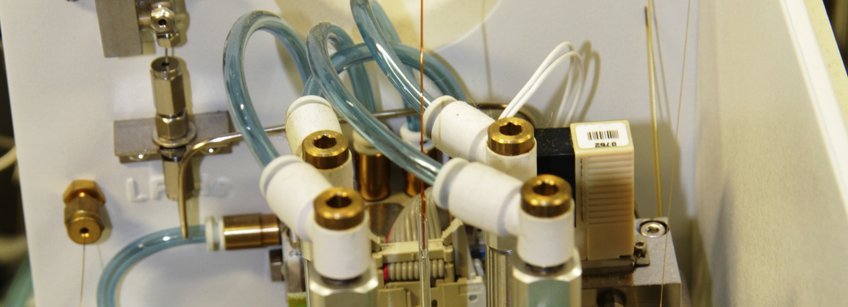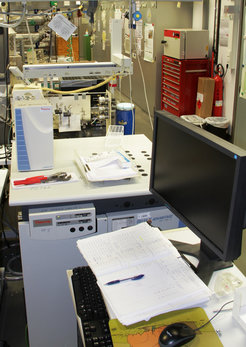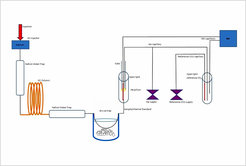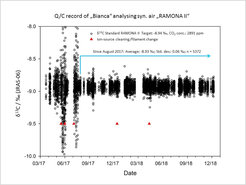
Isotopic analysis of CO2 in gases with variable CO2 concentrations (δ13C)

Numerous incubation and respiration experiments take place at the MPI-BGC. Such experiments require the analysis of δ13C from variable CO2 concentrations, from 400 ppm to 5 % CO2 in air(like) matrices. To facilitate these types of analyses the BGC-IsoLab operates a Delta+XL for Bulk Isotope Analysis of Carbon “Bianca”.

The system is made up of four functional units, a PAL-Autosampler (CTC-Analytics), a GC-System that separates CO2 from its air-matrix, the open split, and the IRMS. The autosampler can be loaded with 5 or 10 ml sample vials. An air standard gas is made available in a septum-capped, sample vial-like copper vessel that is flushed continuously with standard air. Sample or standard air is injected using a 250 or 100 μl gas tight syringe. This allows aliquots of 150 to 12 μl of gas to be injected, facilitating the analyses of CO2 in air at variable concentrations. Helium is used as a carrier gas transporting the analyte through a GC column that reliably separates N2O from the preceding CO2 peak.

The three water traps installed in the system make sure that the sample gases are completely dry. This is important as water can act as a protonation agent, thus affecting δ13C analyses in an unpredictable manner. Up to 90 samples are analysed in a sequence, allowing for multiple injections. Every sequence contains standard air and Q/C measurements that are placed after 5 or 15 sample injections, depending on the sample type. The precision of samples in one sequence is usually better than 0.1 ‰ (1 σ SD).


